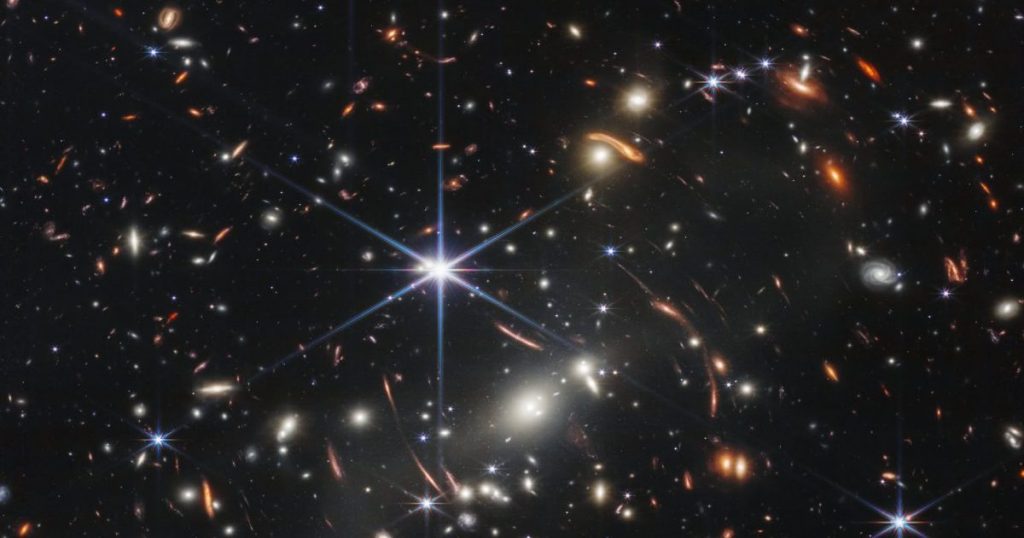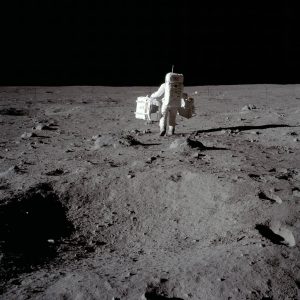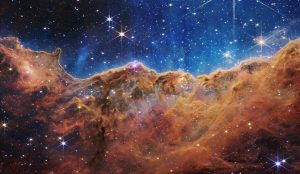The legacy of the Lunar Landing 53 years later
Astronomy professor Ed Cackett joins CultureShift to talk about initial findings of the JWST, and how they stem from our first Moon landing.

Deepest infrared image of the universe, taken with the JWST July 2022.
On July 20, 1969, Neil Armstrong, Buzz Aldrin and Michael Collins left Earth’s comfy atmosphere and headed off into the empty abyss in hopes of landing on the Moon. Their successful Apollo 11 mission is celebrated every year as Moon Day, where we reflect on the Lunar Landing and its impact on society. Many of our current technologies stem from the findings of this mission, the latest of which is the JWST (formally the James Webb Space Telescope).

Ed Cackett is an Associate Professor of Physics & Astronomy at Wayne State University. He spoke with CultureShift this Moon Day about how we arrived at the JWST’s crystal clear images of the universe, and what they mean for life beyond Earth.
The JWST’s predecessor is the Hubble Space Telescope. Launched in 1990, it has given the world some of the most spectacular looks into distant galaxies, expanding the way scientists study our solar system and beyond.
“It really changed our view of the universe.”
Cackett says the most famous images to come out of Hubble are known as the Pillars of Creation and the Hubble Deep Field. The latter of which revealed distant galaxies in an area that was previously perceived as just darkness. These images gave us a new look into how galaxies are formed, helping us understand the universe in ways that were previously impossible.
The JWST aims to make discoveries beyond the scope of Hubble’s capabilities. Its mirrors are larger than Hubble’s so it can capture more information, and it’s specifically sensitive to infrared light, which is imperceptible to the human eye. Cackett says this sensitivity will allow us to see past space dust to learn more about how stars are born.

Several other discoveries have been made just from initial images and data collected by JWST as well. One of which shows evidence of water in the atmosphere of exoplanet WASP-96b.
“We know now that this planet around another star has a significant amount of water vapor there. And we can actually even tell by the signatures that this water vapor looks like it could be clouds. So we get the idea that there is a cloudy region in this particular planet.”
Since life on Earth came from water, does this mean JWST will find other forms of life in the vastness of space? Cackett says that’s a question that prompts more questions.
“I think we just don’t know how prevalent life is, right? The only life we know is the life here on Earth. What we do know from ourselves on Earth, is that we need liquid water and that we produce CO2. We know what the signatures are like of life on Earth. By looking at the atmospheres of exoplanets, we can try and search for similar signatures. Whether we’ll be able to uniquely say, ‘Yes, this is definitively a signature of life on another planet,’ is hard to say, but people will be absolutely trying to do so.”
Photos courtesy of NASA Archives.
Listen: Ed Cackett talks significance of moon landing, findings of JWST
Trusted, accurate, up-to-date.
WDET strives to make our journalism accessible to everyone. As a public media institution, we maintain our journalistic integrity through independent support from readers like you. If you value WDET as your source of news, music and conversation, please make a gift today.
